|
What do you do when your golf game goes off the grid? You’ve been playing some great golf and shooting some excellent golf scores but for no apparent reason your game starts to turn on you; as your golf score average starts to climb your confidence level starts to decline. Well, for many professional golfers and elite amateur golfers the answer is quite interesting. You see the approach you take to getting your game back on track may also lead to your downfall... That’s right, history shows that many golfers who tried to get their game back to where it was, didn’t and sadly they never got close to the standard they used to enjoy. My business partner David Milne and I have known way too many elite amateur and professional golfers over the years who have reached a stage in their golf development where they quite honestly don’t know what to do to get better. Whether they stopped improving or started to play poorly the outcome for many was the same in many cases. They got a lot worse!... Do You Hit the Panic Button?  When elite golfers see their golf scores climb higher for an extended period they can get themselves into a mental state which can lead them down a well trodden pathway taking their game from bad to much worse. Instead of focusing on the reason why the high score average has increased they start to panic and search for reasons why they're not playing as well as they used. At Pro Tour Golf College we call this inferior problem solving strategy: The Panic - React and Try Strategy. The Panic - React and Try Strategy The Panic-React and Try strategy is an approach used by many elite golfers who have been struggling to get their golf to become more performance responsive. We have observed that these golfers tend to hit the panic button when their game starts to go off-track and as a result they become more reactive to their poor performances which forces them to try to find a different method/s, a different teacher, a DVD, a book or anything else in a desperate attempt to improve the direction of their game. As performances go down, their frustration level goes up and leads them to make drastic and unnecessary changes to their game. We estimate (in our experience) that more than 90 percent of elite golfers use this type of strategy and it usually leads to a high rate of failure and sadly many elite golfers leaving the game. Be Careful Not to Grow Rabbit Ears...  What's That You Say? What's That You Say? The panic-react and try strategy is quite prevalent on the professional golf tours where struggling tour golfers tend to ‘grow rabbit ears’ and start listening to the many well meaning types who hang around the professional golf tours in the hope of picking up a struggling golfer on which to work their magic. These golfers if they’re not careful can destroy any chance they have of getting their game back on track usually by going down the path of changing their golf swing. This tends to be one of the most common reactions of tour golfers and elite amateurs. And since more than ninety percent of golf teaching professionals work predominantly on golf swing technique it is highly unlikely that many of the struggling tour golfers will find a solution outside of the improve-the-golf-swing approach. Fortunately a small percentage of struggling elite amateur golfers and a growing list of professional golfers are going to sports psychologists and peak performance experts to help them to get their game back on track. The Elite Golfer Performance Paradox Consider that the golf swing that got you to the heights of the game is the very same one that you want to dismantle and put back together another way. It doesn't make sense, but then again there isn't much that is logical about golf and the way it is learned and played primarily because it is driven mostly by an emotion engine. And when negative emotion is running high, it influences negative logical thought, which is when we tend to make our worst decisions. Of course you might be thinking that this is a normal part of the learning process and you would be right. Learning and improving golf skills has continual ups and downs, and in-fact many more downs than ups. But having said that it is important to recognize the negative effect that your negative emotions are having on your thinking. There's a Better and Much Simpler Way...  If you are struggling with your game and starting to listen to the minions in and around golf, instead of your your inner voice of positive experience, then try this simple and elegant 4 step strategy to get you back on track. This is what we do when students first arrive at Pro Tour Golf College with a well practiced panic-react and try strategy. We apply the Stop-Think-Focus-Act strategy to help them get their confidence soaring and their golf scores under control 1. STOP FEEDING THE PROBLEM - YOU WILL REAP WHAT YOU SOW Firstly we have to STOP the chatter going on in their head and we do this by explaining that as long as they talk about their problem it will stay with them and get stronger. Paying attention to the problem of not playing well and discussing it with everyone around you will not rid you of it. All it does is makes it much worse. So what you should do is STOP talking about the problem NOW and whenever the subject is brought up (not by you) you talk about something else. STOP feeding it and it will die. If you start going into the negative chatter state just shout loudly STOP!  2. THINK ABOUT YOUR PAST SUCCESSES Now this is important; replace your negative chatter with a sequence of positive memories of past performances in the different areas of your golf game where you were very successful. From tee shots to pitch shots to putts made create a consistent series of positive memories to get you feeling more confident. Think about certain shots you played and the feelings associated with these thoughts. Do this everyday for a minimum of fifteen minutes and with as much detail (clarity) as you can imagine. See the shot, feel the stroke you made and listen to the sound of the golf ball leaving the clubface. Also imagine the positive comments from those who care about you. 3. FOCUS ON THE OUTCOMES YOU WANT Before you build a bridge you have to determine what it will look like and how it will work. You can build any old bridge, but the best one is the one that gets you from where you are to where you want to go quickly and efficiently. To build a great process you need a great outcome, and by getting into real detail about exactly what you want going forward you will start to develop a belief in your vision. Every great golfer has a very clear idea of what they want to achieve in the short to long term and you're no different. What is is that you truly want? Start with a small goal like hitting a certain amount of fairways from the tee or something similar. Get very specific about what you want to achieve and it will be easier to do.  4. ACT WITH PASSION AND A POSITIVE ATTITUDE ALWAYS When you go to work on achieving your outcomes do it like there's no tomorrow. Don't be casual about it, do it like it really matters to you. We have found that elite golfers who are passionate about achieving successful outcomes are much more likely to realize them. You'll have days where you'll be challenged, but don't let that stop you from getting to your outcomes. Golf is truly a game that exploits your weaknesses and every golfer has them. The key is to keep plugging away at getting better. Focus on your outcomes and build the best process possible that allows you to tap into your well developed skills that you have spent your lifetime learning. Don't reinvent the wheel, you already know how to play golf, so get out of your own way and start playing again just like you used to. Everything you have learned from golf resides inside you and the last thing you want to do is change what you're doing. You already have all the resources you need to get your game back on track and to take it from there to levels never before experienced. Believe in yourself and your ability by taking responsibility to become the golfer you truly want to be. Lawrie Montague and David Milne - Pro Tour Golf College  Congratulations to Pro Tour Golf College student Whitney Hillier who has bounced back to form this week to win the prestigious Trans National Tournament stroke play section with scores of 73 and 69 after missing the cut in her previous two tournaments. This tournament has been running since 1927 and is considered in the top three amateur events in the USA. Whitney now goes into the match play section seeded no1. With the US Womens Amateur Championship being played at The Country Club in Cleveland Ohio from the 13th-17th of August Whitney's form is where it needs to be leading into this important tournament. She has been on the road for six weeks and next week she will be attending Golf Australia's Camp being held at The Woodlands Golf Complex in Houston Texas, for players based or playing in the USA. The main aim of the camp is for the Aussie golfers to recharge their games and bodies as they have been on the road competing in tournaments practically every week. They will have access to physio's, strength and conditioning experts, and a bio-mechanist and so it will be up to the player to decide which service provider can help freshen them up for the upcoming important events. Lawrie and I will be in touch with Whitney to ensure she gets the most out of this camp and be mentally ready for the US Womens Amateur.  GOLF ON TOUR: SHOULD LONG PUTTERS BE RULED NON-CONFORMING BY GOLF’S GOVERNING BODIES? Watching the final nine holes of the Open Championship last Sunday it looked like a battle of the “Broomstick” vs “Belly” putters. With Adam Scott wielding the broomstick and Ernie Ells using a belly putter, Ernie was the victor by one shot at the end. How much has the long putter helped these two great golfers to get back into the winning circle?... Well Ernie’s strokes gained-putting ranking was 181st in 2011 and is currently 68th (see below left) which is a significant improvement, and has allowed him to be in contention on the final day of tournaments once again. Now let's have a look at Adam Scott's numbers because they don’t lie either!... From 2008 to 2010 he ranked 178th, 180th, 186th respectively using a conventional length putter. He started using the broomstick putter at the start of 2011 and his ranking improved to 146th, and in 2012 he is currently ranked 77th. (See above right) 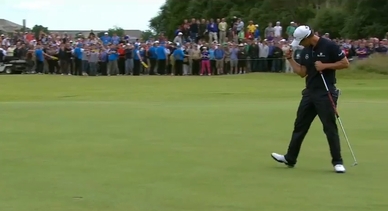 So now with a second golf major being won with a long putter, (Keegan Bradley being the first at the US PGA last year) the R&A is going to discuss the future of the long putter when it’s committee meets shortly. There will be a number of player’s futures as tournament players in the balance with their decision - especially Aussie pro’s Peter Senior and Nick O’Hern who have played most of their careers using a long putter. The main issue is that the long putter is anchored against the belly, sternum or chin providing a third point of contact between the golfer and the club, with the other two points being the hands of the golfer using a conventional length putter. That anchoring creates a fulcrum point which arguably makes it easier to use a pendulum putting stroke. I personally don’t believe the governing bodies will rule against the length of putters but will rule against the putter being anchored to a third point of the body. Watch this space!!!  OneAsia Tour member Brent McCullough who trains at Pro Tour Golf College when his schedule permits and also uses our training system when he's on the road, has been shooting some low rounds of late. At last weeks $50,000 Ian Weigh Toyota Rockhampton Pro Am he produced rounds of 71, 66, 68, 71 for 12 under par total and a share of third place just two strokes behind the winner Peter Wilson. Two days earlier Brent shot 6 under to tie for first at the Capricorn Country Club Pro am which is a good lead up to the Thailand Open early next month. Brent has made some excellent changes to his golf swing technique and short-game with my co-director Lawrie at Pro Tour Golf College and is building momentum for the big tournaments which start up in a few months time. David Milne and Lawrie Montague - Pro Tour Golf College  Golf skill progress is a complex and lengthy process that will challenge you mentally and physically if your goal is to achieve very high standards of performance in golf tournaments. One of the biggest road blocks to developing your golf skills so you can break 70 in golf tournaments is the idea that you can become consistent at the game of golf. Consistency is something golfers from novice level to tour level strive to achieve every time they compete, and in today's article I'm going to show you why trying to become consistent at the game of golf is the wrong way to approach becoming a competent and successful amateur or professional golfer. When I looked up the word consistency I found this definition of the word that I liked and could relate to: Unchanging in achievement or effect over a period of time of a person, behaviour, or process. When you think about the word consistency in the context of golf performance it is easy to imagine something like a wave pattern with a consistent frequency like the image below? The idea is that your scores vary little from your lowest to highest scores so that it can be represented as a consistent wave pattern. However the reality is a long way off when it comes to developing a consistent performance on the golf course. The image below gives you a great example of what I mean. It shows three very different and distinct wave patterns with the white one showing a consistent frequency from low to high moving from left to right as described above and the others moving erratically from high to low as they travel from left to right. 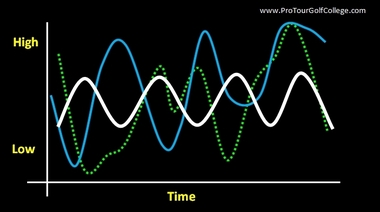 The green dotted line represents 12 rounds Luke Donald’s played from the Zurich Classic to the Memorial Tournament. The blue line represents 12 rounds Charlie Wie’s played from the The Players Championship to the Memorial Tournament. I think you’ll agree that there’s not a lot of consistency in their wave pattern frequency from low to high and from left to right... I think it is naive for any golfer to think that their competitive golf performances will be consistent and predictable for prolonged periods of time. Life is not like that and your golf game is certainly not like that either. In the images above you can clearly see the results of 12 competitive rounds of golf over three tournaments that Luke and Charlie played earlier this year. Notice the variation in their golf scores from one round to the next? (Click on the images to expand them) There’s not a lot of consistency here with their competitive golf scores fluctuating erratically. Luke Donald (The current world number one at the time of writing) has a wave pattern that has tremendous variation from low to high - from round to round. What makes both of these golfers scoring patterns interesting is their low to high stroke difference.Charlie Wie's low to high stroke difference for these 12 rounds is 8 strokes and Luke Donald's is 10 strokes. That seems like a lot but our studies of tour golfers at Pro Tour Golf College shows that a 7 to 10 stroke variation in low to high scores in competition is reliable from tour to tour. Luke Donald and Charlie Wie like all successful competitors have learned how to cap their highest score above par to just 75 in this example, and their lowest score to 65. Both of these golfers show the statistic that is much more important than trying to become consistent at the game of golf and that is their competitive score average. This is the real secret to improving your performances on the golf course. You have to learn how to cap your highest score to just over par and lower your lowest golf score to as much under par as possible if you want to become a successful tour golfer. Your competitive score average is what determines how successful you are on the tour. Luke Donald's competitive score average over the 12 rounds he played was 69.75 which earned him more than 900,000 dollars in prIze money. Charlie Wei had a competitve score average for his 12 rounds of 71.9 which earned him over 100,000 dollars. 2.15 strokes difference in their competitive score average in this example is 800,000 dollars difference in prize money! Consistency doesn't matter nearly as much as your competitive score average does! Charlie had more high score rounds than Luke and the bottom line is a big difference in dollars earned. 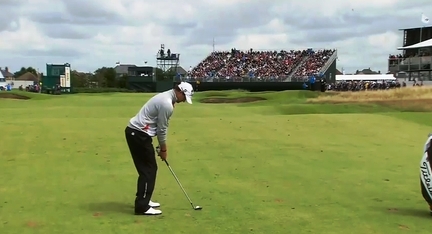 Of course that doesn’t mean that you shouldn’t expect the best from yourself and your game each time you perform. You see it’s just that the reality is your golf score pattern will have a high point that is higher than you want it to be and a low point that is never low enough. At Pro Tour Golf College we teach our students to understand this high to low performance phenomenon and embrace it. Because it’s only by embracing the mystery that is golf score variability that you will truly understand the challenge facing you. And with that being said, our key strategy with our PTGC golf training program is to lower the high score average of each of our students by designing a well thought out training process that incorporates a proven improvement plan. Your golf scores from round to round shouldn't vary by more than ten strokes and you should focus on developing a way to cap your high scores whilst at the same time learning how to bring down your low score average which is the key to becoming a more competitive golfer on the golf course.
When you can get your game to a standard where you hardly ever make a double bogey or worse, then you are on your way to lowering your high score average and your competitive score average. You will have days where the best you can produce is score a 78 so don't let this discourage you. Keep working at developing the golf skills that lower your high scores and before you know it you'll discover that your competitive score average is lower than you ever imagined it could be. Lawrie Montague and David Milne - Pro Tour Golf College  Pro Tour Golf College student Danielle Montgomery had an awesome finish on the European Ladies Tour last week in South Africa. The event was the prestigious South African Open played at the Selborne Park Golf Club in KawaZulu-Natal. As I predicted in last week newsletter the conditions would suit Danielle and they did! Danielle started slowly with a 74 in the first round but when the wind got up on the last two days (80km on Sunday) the organizers had to delay the start by 2 hours allowing the Perth girl to catch the leaders with a 2 under 70 on the second day. An even par 72 on the 3rd day was one stroke short off getting into a playoff for the title with Germany’s Caroline Masson. This excellent finish has shot Danielle down the Order of Merit from 70th to 36th position. Lawrie I believe a few more times getting into contention and her time to win is just around the corner. Well done Danielle from all at PTGC. IS STROKES GAINED-PUTTING THE MOST IMPORTANT STATISTIC FOR WINNING GOLF TOURNAMENTS?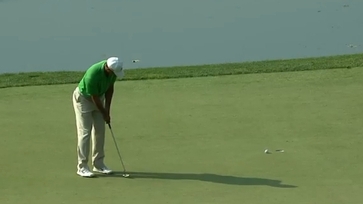 As my blog last week indicated, this relatively new putting statistic on the PGA Tour is the most accurate way to identify the player who putts the best against the field for that round, tournament or season. But is it the most important statisitc to set up a player to win a tournament?... On examining the 2012 PGA Tour season so far, only two players have led Strokes Gained-Putting (SG-P) and also went on to win the tournament, Luke Donald and Phil Mickelson. So does this mean SG-P is just another meaningless stat? Lawrie and I have dug a little deeper and winners of every tournament this year were in the top ten SG-P (56%) and 76% were in the top 20 of the SG-P stat. The average PGA Tour winner gains 1.275 strokes on the field which translates to better then 5 strokes over 4 rounds. Only one winner Jason Dufner at the Byron Nelson was -1.546 against the field. This means that for a player with a minus SG-P stat to win they have to have an outstanding week tee to green and/or play the par 5’s very well. The tournament this week on the PGA tour is a good example. Jason Bohn (3.308) and Luke Guthrie (2.215) are leading, and the players on the cut line Brian Bateman (-1.171) and Peter Lonard (-0.461) are in danger of not getting paid this week! 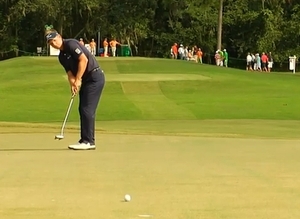 Here’s a look at some of the PGA Tour calculations on average number of putts to get the ball in the hole. These are calculated from data collected from ShotLink and therefore come up with the probability of one, two or three-putts from any distance. A player's chance of one-putting drops 20 percent when moving from 3 feet (95%) back to 5 feet (75%). Just under 8 feet: At the 7-foot, 10-inch mark, it's 50/50 whether players will one or two putt.
Understanding the above calculations will help you get the true conversion rate for putting and remember this is from the PGA Tour and we know “These guys are good”! 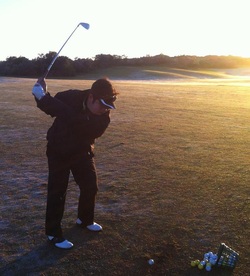 Here is a good story of dedication and hard work combined with a program that is designed to lower your competitive scores. Bernard Chan started in the PTGC program in September 2011. His competitive stroke average when he started with us was 84.3 as he had devoted the previous 3 years to completing his university degree and had not played much during this time. Over the last month (June) his competitive stroke average has dropped to 74.4 and is going down. For most golfers shedding 10 shots off your score in such a short time is only a dream but at PTGC we know it’s possible with our high performance program designed to do just that; lower your golf scores. Bernard is always the 1st to arrive each morning and the last to leave at the end of the day. He has improved all facets of his game plus understanding how to manage himself mentally at training and learning to transfer that form to the golf course more effectively.
In his own words “the support I get from Lawrie and David plus the encouragement from the other PTGC students has been invaluable in my goal to play successfully on a PGA Tour”. The Open Championship is on this week at Royal Lytham & St. Annes and it will take a special player to win. With 206 bunkers guarding fairways and greens and penal rough, straight tee shots, scrambling skills from fairway and rough with the ability to avoid three putts are required. Not much sleep this weekend for all the diehard golfers out there. Good golfing David and Lawrie Last week the two best golfers on the planet over the last 10 years missed the cut at the Greenbrier Classic in White Sulphur Springs West Virginia. It’s the first time Tiger Woods and Phil Mickelson have missed the cut in the same tournament on the PGA Tour. On the flip side two relative unknowns Ted Potter Jnr. and Todd Kelly were involved in a playoff for the title with Ted Potter Jnr winning and becoming an instant millionaire. Coming into the tournament their rankings on the PGA tour money list were 167 and 199 respectively and both had missed the cut in half the tournaments they had played in. To add to this Ted Potter Jnr. had missed five cuts in a row coming into the Greenbrier Classic. 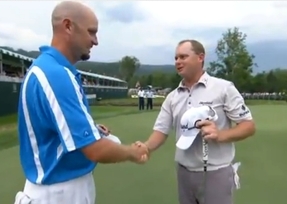 So what changed for these two professionals at Greenbrier? They had each shot 4 under after the half way cut (which was at 1 under) and the leader was at 9 under. Both had identical scores of 12 under (Ted Potter Jnr. 64-64 and Todd Kelly 62-66) on the weekend to finish on 16 under after 72 holes of regulation play. Was their ball striking the difference or was it their short game? As we do here at Pro Tour Golf College we strive to be as precise as we can to make sense of the stats to explain the reason why certain player’s score lower than the others. So crunching the numbers as Lawrie and I do, the one stat that both Ted and Todd were streets ahead of the field on- especially on the weekend was “Strokes Gained-Putting”. On Saturday and Sunday they were ranked one and two. Ted Potter gained 3.178 strokes on Saturday and 3.193 strokes on Sunday against the field. Todd Kelly gained 2.131 and 3.254 on the field. 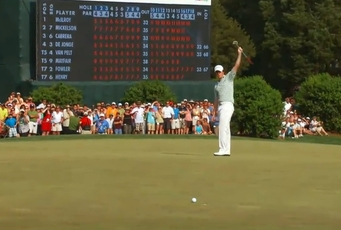 So how does strokes gained putting work? The strokes gained putting stat has been in use on the PGA Tour since May 2011 and it was developed by Professor Mark Broadie from the Columbia Business School. He explains it as a stat that measures the number of putts a golfer takes relative to the PGA Tour average, taking into account the initial putt distance on each green. Well suppose for example a golfer one putts from 33 feet. The Tour average to hole out from that distance is 2.0 putts, so a one putt (see photo above) gains one stroke on the field. A two putt neither gains nor loses but a three putt represents a loss of one stroke against the field. From other distances, the strokes gained or lost are typically in fractions. For example, suppose a golfer one putts from eight feet. The Tour average (identified from ShotLink) is 1.5, so a one putt gains 0.5 strokes and a two putt loses 0.5 strokes. If a golfer putted ten times from eight feet and made half of them his strokes gained would be Zero—he gained 0.5 on five holes and lost 0.5 on the other five holes. Now if he made six and missed four, his strokes gained would be one. He gained 0.5 on six holes and lost 0.5 on four holes. This makes sense as he took 14 putts vs the Tour average of 15 from eight feet.  Strokes gained on each hole are added to give total strokes gained for round, tournament or year. This is a pure measure of a golfers putting skill compared to other stats e.g. total putts and putts per G.I.R. which mix sand skill, short game control and iron play into the equation. This is a much better way to measure your putting and it explains why proximity to hole is a major influence on your chances of making more putts verses missing. As a matter of interest Aaron Baddeley averages 0.808 per round and is currently leading this stat on the PGA Tour in 2012. Do you know what your strokes gained for putting is?...  Pro tour Golf College students playing around the globe have had good results and continue to learn and adjust to life on tour. Jason Scrivener had a good tournament on the Canadian Tour at the Dakota Dunes Casino Open shooting 68-71-69-70 for a total of 10 under and 22nd position. The scoring was very low for this tournament but if Jason can maintain his competitive scoring average of 2.5 under per round he will put himself in contention to win tournaments in the coming months without a doubt. He’s playing in the Canadian Tour Players Cup this week and has started where he left off last week signing for a 4 under 67 and tie for 5th position. He takes a well earned break at the end of this week after six tournaments in a row. Two weeks in London catching up with friends and then to Thailand to play on the OneAsia Tour then back home to prepare for the end of year Aussie tournaments.  On the Asian Development Tour Zaw Moe from Myanmar who turned his game around at Pro Tour Golf College two years ago shot 69-69-68-69 (13 under) and tied 5th. The amazing stat was that he finished 9 behind the winner Sujjan Singh from India. So no matter where you play in the world the standard of professional golf is very high. Sujjan opened up with 64 and 63 on Thursday and Friday and lead by 9 strokes from Indonesia’s Rory Hie in 2nd place. Followed with a 67 in the 3rd round and coasted in with an even par 72 on the last day for a total of 22 under par. A player to watch in the near future.  Bramantio Adi or Ibam as he is affectionately known at Pro Tour Golf College enrolled in the Tour Player Bridging Program in April last year. He arrived with a handicap of 10 and a competitive stroke average of 84. A model student who has dedicated himself to playing successfully on a PGA TOUR in the near future. He is currently playing off a 2 handicap and has reduced his competitive stroke average to below 75. Ibam has been rewarded by getting into and playing in his first Pro tournament on the Asian Development Tour in Jakarta being played at the Imperial Golf Course. He shot 73 in the 1st round and is tied for 38th position. A remarkable achievement for someone who has been playing golf for less than 2 years. A former goalkeeper for the Indonesian National soccer team (under 18's) Ibam is showing what hard work combined with the proven training programs at PTGC can do to produce amazing results.  Danielle Montgomery is playing in the South Africa Ladies Open on the European Ladies Tour and we wish her all the best. Conditions should suit the girl from Perth. Tatiana Wijaya is T9th going into the last round of the Callaway World Junior in San Diego. A good last round will get her into the top 5 position. Go for it Tia!! Plenty of golf being played all over the world and the focus will be on the 3rd Major of the year. The British Open or “The Open” as its referred to by students of the game is the oldest golf major and history confirms that all great golf champions from every era have their name on it. This year it’s being played at Royal Lytham & St. Annes. Who will lift the claret jug this year? We'll let you know in next weeks newsletter, so stay tuned. Good Golfing, David & Lawrie - Pro Tour Golf College  What makes one elite golfer lower their golf score average faster than another? Why does one golfer perform better under pressure than another? Why do some professional golfers reach the pinnacle of their golf mountain whilst others live in the shadows at the bottom? We'll look at how the way you practice your golf skills can go a long way in determining whether you become more successful in your golf performances over the long term. You’ll learn what the research shows about a highly specific type of practice that has the potential to make you improve faster than other method. 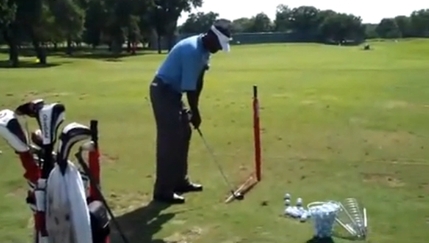 At Pro Tour Golf College we believe that golfing ability is a product of your environment (nurture) and not a product of some ‘mystical talent gene.’ Just in case you were wondering... When I played golf on the pro tour I never achieved the level of success I desired, and as a result I was motivated to find out what I needed to do to improve my skills more effectively and share that information with my students. I have spent a great deal of my adult life studying the most effective methods and strategies that lead to better and more consistent results. When I competed in golf tournaments I was under the mistaken impression (Like many of my generation) that mindlessly hitting lots of golf balls was the answer to better performances. So I practiced long hours and although I improved a little, I never got close to realizing the level of my aspirations.  For more than twenty years I have been on a quest to understand the underlying principles that drive expert performance on the golf course and beyond. In the early 1990’s my thirst for knowledge and understanding led me to a paper written by Professor Karl Anders Ericsson of Florida State University that helped to explain the many questions I had about how to achieve superior performances on the golf course. His landmark paper; “The Role of Deliberate Practice in the Acquisition of Expert Performance” gave me a new perspective on what high achieving men and women were doing to produce outstanding results. (Download and read this paper here)
 Professor Ericsson and his colleagues studied experts in a wide range of domains, including golf, writing, chess, stock picking and surgery. They assembled all the information they could on why high achieving men and women were essentially better than average performers. Their findings led them to identifying a practice process that these men and women were employing to generate long-term improvement that Professor Ericsson and his colleagues call Deliberate Practice. Deliberate Practice is a unique approach to practicing your skills with the clear and unmistakable goal of improving your performance first and foremost (as opposed to just hitting balls). The key distinction with deliberate practice over normal practice is that you consciously manage your practice effort towards the goal of continuous improvement. It consists of high repetition and an unnerving and relentless focus on improving your weak skills, which requires you to constantly stretch yourself beyond your level of comfort and familiarity. As Professor Ericsson has been quoted as saying; “The journey to truly superior performance is neither for the faint of heart nor for the impatient. The development of genuine expertise requires struggle, sacrifice, and honest, often painful self-assessment.” An important part of the deliberate practice approach is for you to monitor your results consciously and consistently, then correct or adjust - ideally with feedback from a competent and experienced coach. The feedback part of deliberate practice is extremely important as one of the main responsibilities for the coach/mentor is to teach you how to become more self-reliant with your practice. This happens to be one of the main drivers in our training program at Pro Tour Golf College. The aim of deliberate practice over the long term is to both improve the skills you already possess and extend the range and reach of your newly developing skills. And one thing Professor Ericsson is very clear about; there are no shortcuts! He believes it will take you at least ten years of dedicated and deliberate golf practice or even longer to achieve a high level of expertise. At Pro Tour Golf College we have developed a deliberate practice golf model that is a framework that helps David and I to develop our students abilities. (See below) This framework will help you to build your mental model of the important elements that will shape the way you practice and play golf.  We Assess Our Students with the Help of the E.G.I.S Program We Assess Our Students with the Help of the E.G.I.S Program 1. Define Your Weakness: The starting point of the deliberate golf practice process is for you to define your weakest critical skills that limit the range and potential of your performances on the golf course. A small number of your golf skills are critical to improved performances and you need to isolate the weakest and work forwards from there. Of all the golf skills you use you will discover that that only four or five skills have the most significant effect on your golf performances on the golf course. Choose the weakest most important skill and move onto the design phase of improvement. 2. Design a Better Strategy: In the design phase you need to devise a golf skill improvement strategy that quickly and efficiently corrects the weak skill. This strategy should be underpinned by the need to keep the change process relatively simple as this will enable you to make consistent progress. The more complex you make the golf skill improvement strategy the longer it generally takes to improve the skill. This is where it is vitally important that you have the support of a competent professional golf instructor to help you design the very best strategy. 3. Devote the Time: Golf skill development requires a constant day to day dedication to a repetitive training process that facilitates the learning and remembering process. There is no shortcut to developing your golf skills to a very high level of expertise. Whilst you’re practicing your golf skills you need to monitor (be very aware) how your practice is coming along. If you ‘get lost’ in golf ball hitting you will not be effectively developing your powers of concentration the correct way. The whole idea of deliberate practice is to practice to generate a positive return on your investment of sweat equity. If you fail to practice deliberately you will fall under the law of diminishing returns where your effort will lead to a leveling out of your skill. The research shows that high performing individuals cannot sustain deliberate practice beyond four or five hours as it's a highly demanding mental activity. This practice process requires a great deal of effort to power your focus and concentration over that many hours successfully. Regular mental breaks to assess how your practice is coming along is essential for you to find ways to continually improve your golf skills. “While I am practicing I am also trying to develop my powers of concentration. I never just walk up and hit the ball.” – Ben Hogan  4. Discuss the Results: Expert feedback is essential to create momentum and also ensure that the work you’re performing is of the highest possible standard. Every serious performer in business, sports and the arts has a reliable feedback source in the form of a coach or mentor who constantly supervises their practice. Deliberate practice is built around the premise that to improve your skills you need someone outside of yourself who understands the learning process and your strategy for improvement to guide your effort carefully. At Pro Tour Golf College students are supervised for 25 to 30 hours per week (100-120 hours per month) which gives them a significant competitive advantage over golfers practicing on their own. Without constructive and sometimes painful, feedback from a coach it will be virtually impossible for you to make the continuous progress you’re striving for with your game. Your coach should be helping you to develop your mental model of the success process in golf for you, and also be guiding you towards your next step in the performance improvement process. So there you have it. This gives you an idea of how we use the deliberate practice framework at Pro Tour Golf College to guide the progress of our students towards their goals. Practicing deliberately is by no means easy to do-particularly on your own, but by studying the principles of deliberate practice and introducing them into your golf practice each day you will give yourself your best chance of generating continuous improvement of your golfing skills for a long time to come. Lawrie Montague and David Milne - Pro Tour Golf College The Professional Golf Tour Training College for Serious Amateurs  On the European Tour last week Jaime Donaldson from Wales won the Irish Open at the famous Royal Portrush Golf Club. This might not sound like anything special apart from this being Jaime’s first victory on the main tour. Dig deeper and its taken 12 years and 255 starts for Jaime to achieve this feat. He turned pro in 2000 and played the Challenge Tour for a couple of years before gaining his full card in 2002 and kept his card for 5 years before injury forced him back to the Challenge Tour. In 2008 he regained his full card on the main tour and has made steady improvement each year with a career best finish of 38th in the Race to Dubai in 2011. An 18 under total with a 66 in the final round was good enough to win by four shots. A story of perseverance and in his post victory interview Jaime spoke about sticking to his plan and he never doubted he would win one day. At 38 years of age and like Jason Dufner on the PGA Tour another late bloomer their persistence and self belief have allowed them to taste success at the highest level later rather than earlier in their career.  Tatiana Qualifies For US Ladies Amateur Championship Lawrie and I received a message from a very excited young lady PTGC’s Tatiana Wijaya who shot 68 and won her qualifying section to play in the US Ladies Amateur Championship at the Country Club in Cleveland Ohio from the 6th to 12th of August. What a great result for the recently turned 16 year old and will join another PTGC student Whitney Hillier in the field. 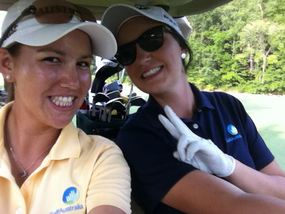 Whitney with Bre Elliott at the US Open Whitney Hillier is Spending a Week With Karrie Webb at the US Womens Open Whitney is spending this week with Karrie Webb at the US Ladies Open in Wisconsin and is having an unforgettable experience that will hold her in good stead for the future. Best of luck to Karrie attempting to add to her seven Major titles she has won.  Up and Downs For Rance Rance De Grussa is experiencing the ups and downs of life as a professional golfer on tour. After making the cut and a cheque last week on the Asian Development Tour he missed the cut by 1 stroke this week. Disappointed is an understatement but after speaking with Rance he knows where he can improve his game for next week and will devote the rest of the week sharpening his skills so he is ready and able for next time. As we move onto the second half of 2012 the pressure starts to increase for those tour professionals who are not doing so well. Only the top 125 on the PGA Tour and 115 on the European tour retain their full playing privileges’ for next year. This is where a good golf periodisation plan will help you to reduce the urge to hit the panic button and stop making decisions based on emotion rather than sticking to a plan like Jaime Donaldson has and believing in yourself and your support team until your break through. Until next week, David Milne and Lawrie Montague - Pro Tour Golf College  I’m going to introduce you to a very powerful and persuasive model for change that will teach you how to practice golf and help you to transform your golf game to a very high level. This model is simple to understand and extremely effective at keeping you on track with your goals. As you read through this article answer the simple question at the end of each section honestly. Our “Golf Praxis Performance Model” is a how to practice golf model that provides our students with the questions they need to ask themselves continually as they go to work on practicing and developing their golf skills to lower their golf scores and become more competitive. I’ll guide you step-by-step through the how to practice golf process and explain why you need to seriously consider every aspect of this model if you are deadly serious about improving your golf game. You need to have a well defined approach to golf development if you want to achieve your ambitious goals and our golf praxis model will help you to do this. In case you’re wondering, praxis means to translate your ideas, theories or lessons into action. It’s using the knowledge you’ve acquired in your life and turning it into a practical and purposeful practice process that brings about ideal results. That’s why we use it at Pro Tour Golf College because it takes the how to practice golf theory and turns it into something practical, useful and helpful for our students and it will do the same for you.  Passion Fuels Your Motivation to Practice For Longer: Do you love golf and the idea that you can become a great golfer? We hope you do. In-fact it’s vitally important that you do. When we work with advanced golfers the starting point for us is to make sure that the golfer has a strong passion and desire for improving. Passion drives your golf performance and research shows that it is the key fundamental in motivation that will keep you developing your expertise over a long period of time. There’s also a correlation between your level of passion and the scores you produce. The higher the level of passion - the better the golf score. The reason for this is simple; passion keeps your interest focused on achieving worthwhile outcomes. No golfer will continually put up with failing without the passion and commitment to keep moving forward. Passion is about the motivation from within. Passion also makes you a self-starter and someone who marches to the beat of your own drum. To play scratch golf or break 70 consistently you need to have a strong commitment to self-development and without the passion to perform and continually improve yourself you simply will not get to the standard of golf where you can break 70. Every successful male or female who has achieved anything of significance has been powered by their passion for achieving excellence in their field or domain. Q1. Do you have passion and desire for working long and hard to reach your goals?  Pride Powers Your Practice With Precision and Patience: The definition of pride has two meanings. Its negative association is that it refers to an inflated sense of status or achievement. The positive association is that it refers to a contented sense of attachment to the choices you make and your actions. It is a product of praise, self-reflection, or a fulfilled feeling of belonging. Pride for us relates to the development of a positive self-image and also the quality of your approach to your practice. You need a strong sense of pride in how you go about practicing and developing your golf skills. With pride in everything you do you will develop your golf skills and attitude to a very high standard. Pride is a product of the hard work you do and the attainment of small successes along the way. Over time you start to develop a strong sense of confidence in yourself and your ability to get the job done. Pride in this case is a virtue, a desirable quality to develop and it is extremely important for developing your golf game to a standard of par and better. Top tour professionals are often mistakenly perceived as have an inflated sense of self, but in-fact what they have is an extremely well developed level of confidence. To play this game at the highest levels you need to protect yourself from its dangers – the constant failure that is an inherent part of the game. Pride ensures that your work or practice is first class. That everything you do is to the very best of your ability. Without pride in your work you will never learn to perfect your techniques because you’ll settle for less than you’re capable of. Q2. Do you have strong pride in the way you go about developing your golf skills and golf game?  Purpose Provides a Focus For Your Practice: There an old saying from the famous football coach Vince Lombardi that goes like this; “Success demands singleness of purpose.” Basically what it means is that you need to be focused on what you do to the exclusion of nearly everything else. You cannot pursue your goal of improving your golf scores and golf game if you can’t find the focus to keep your nose to the grindstone. It is hard to go to the practice fairway and hit balls on a daily basis; or chip and putt for hours on end if it doesn’t fit into an overarching plan. Your purpose needs a point. That is, it needs a reason to exist. The reason is that you want to be a great golfer, or you want to produce low golf scores. To become a great golfer you need to work hard, very hard; and to work hard and manage you effort, you need a good plan. A good plan will give your practice a direction and a purpose. Is there a point to your practice? We hope so. More than likely there is, and a strong purpose is the vehicle you need to develop your golf skills and game to the level where you can achieve the success you desire. Purpose is the substance of goals, objectives and outcomes and requires a narrowing of your focus and the patience of a monk. Training your golf skills require hours and hours of honing and refinement, and the golfer with a good plan makes it easier to see an outcome to the work as well as the necessary control points needed along the way to ensure that you remain on track. To lower your golf score average you can just go about your practice casually or you can plan it carefully and in a calculated manner. We believe that every bit of your effort should be guided by a plan that provides you with the tools to reach your goal. Q3. Do you have a focused purpose and plan for getting to your goals? 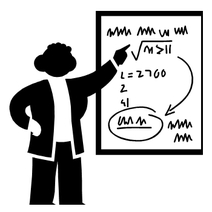 Principle Based Practice Drives Predictable Performance: To move yourself and your golf club purposefully you’re subjected to simple explainable laws of force and motion. When you practice your golf skills it is advisable that you have a reasonable understanding of the principles behind why you practice your golf skills a certain way, particularly if you want to improve your golf scores. You don’t have to have the knowledge that a competent golf teaching professional has, but you do need to understand what you are doing so that you can practice the long lonely hours without getting yourself into trouble. In other words, you need to become self-reliant. You need to understand the principles that will drive your practice to predicable outcomes. As you are aware (if you’re been reading our articles) we coach our students at Pro Tour Golf College to improve their golf performances with the application of sound training principles that guide, govern and generate effective results for them. These principles are not ideas or randomly generated thoughts but sound tested structures that should guide your effort. When you practice you need to decide on the principles that will help you to improve. These principles are based around the simple idea that if your can track, test and measure your practice, then you can improve your golf performances on the golf course. The underlying rule that should drive your golf practice is that all your physical and mental effort will lead you to lower golf scores in competition. Therefore you must ensure that your practice effort is in some way or another influenced to stay on this path with the use of sound guiding principles. Think about it; if all your effort was directed at lowering your golf scores in competition then how would you go about it? In our opinion you would start by establishing a baseline to work from and then develop a plan that moves you towards your goal. Q4. Is you golf practice underpinned by sound practice performance principles?  Process: The Glue that Binds Your Golf Practice System: The golf practice process is a course of action that takes your golf skills from one place to another. Practicing your golf skills is basically a whole series of small events that are influenced by the preceding parts of the praxis as discussed. The golf praxis takes an idea and turns it into action, and that action has consequences. Your job is to guide the direction of your practice to a successful outcome, and the way you do this is to stick to the path by being consistent with the routines that keep you engaged until the end. A process in simple terms has an input end---a route to travel and an outcome end. It’s a simple cause and effect event. Your approach to practicing your golf should be strongly influenced by the need to ultimately improve your golf scores. The practicing of your golf strokes is the means to this end. Unfortunately many golfers will go about this casually and the result will be unstable and inconsistent practice architecture and results that are less than desirable. This is why it is absolutely essential that you design and build practice structures that drive your performance in the direction you want to go. Of all the elements in the golf praxis, mastering the process is the most important, simply because the structure or framework is meaningless if you don’t drive better performances because of it. Use the golf praxis model to guide you from one end of your practice session to the other, and from where your competitive score average is now to where you wish it to be. Golf practice is your vehicle for getting to your goals. Without the passion to be motivated to work hard and the pride of workmanship to do your best work, your purpose will be problematic and it won’t matter whether your work is principle based as you will never stick to the process long enough to transform your golf skills in the months ahead to be the golfer you wish to become. Q5. Do you stick to the practice process that gets you from one end of the process to the other? We hope that enjoyed this article and if you have any questions about the golf praxis or anything related to game improvement, just drop us a line at [email protected] Until next week, All the best with your practice and performances on the golf course. Lawrie Montague and David Milne - Directors of Pro Tour Golf College |
Archives
June 2019
|
||||||
Proudly Supported By
Copyright © 2011 - 2018 Pro Tour Golf College
Website Managed By Golf Performance Media
All Rights Reserved
Website Managed By Golf Performance Media
All Rights Reserved

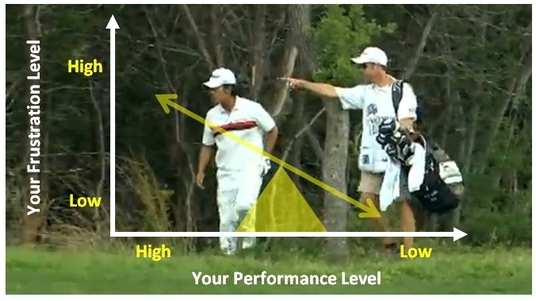

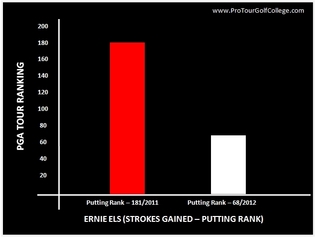



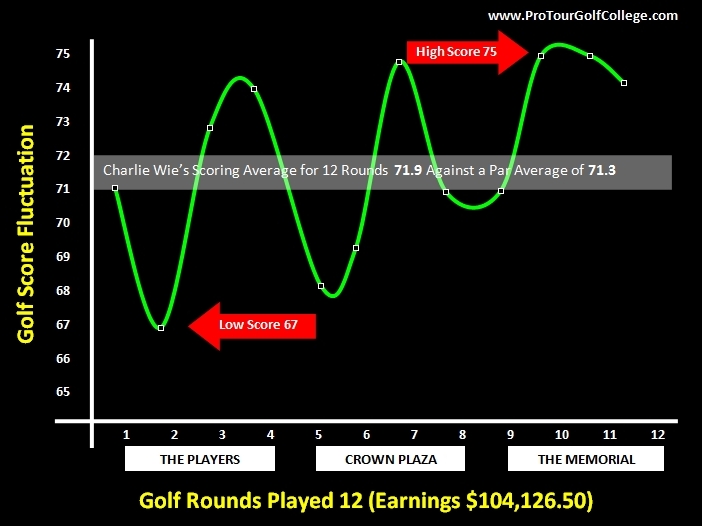
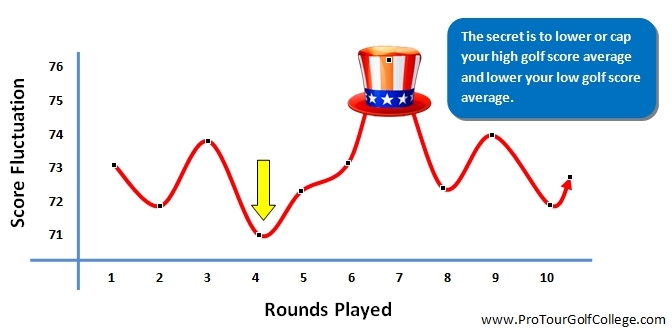

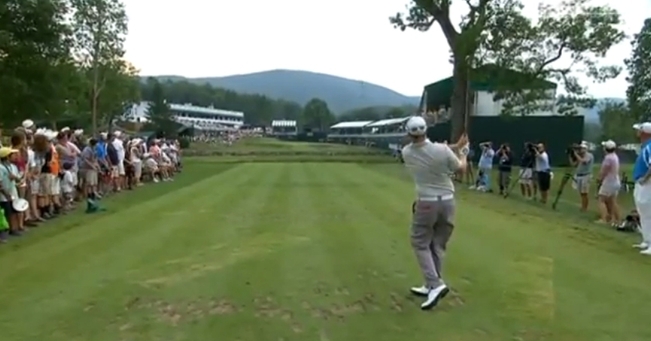


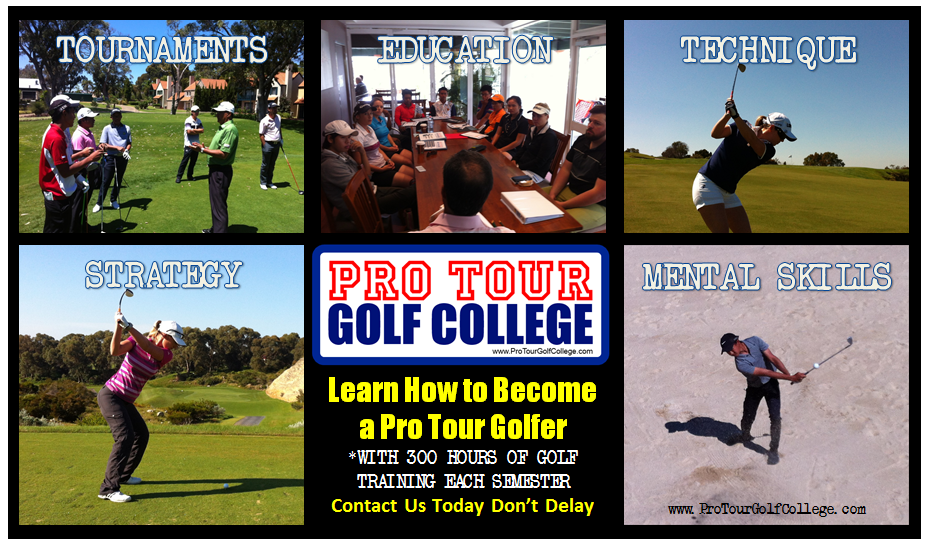


 RSS Feed
RSS Feed



